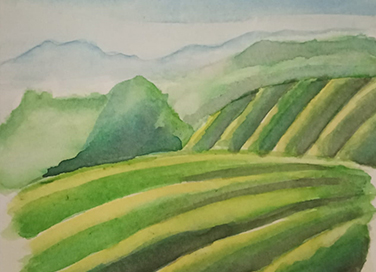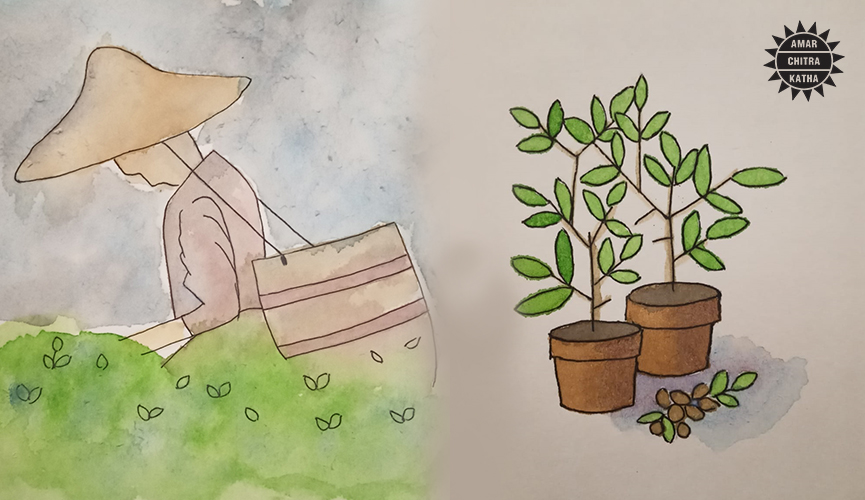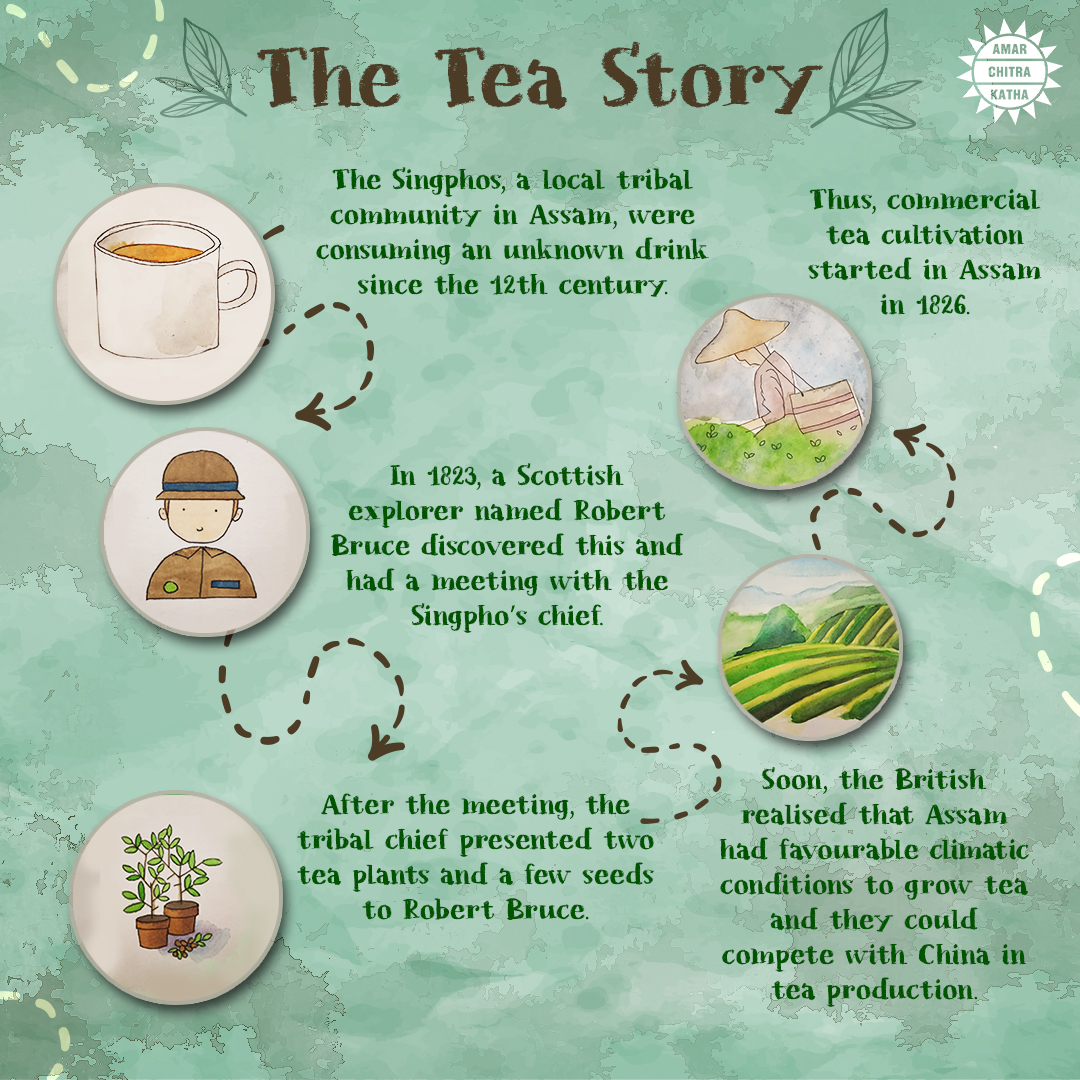The Fascinating Story of Tea in India
- May 21, 2022


The Fascinating Story of Tea in India
- May 21, 2022
By Srinidhi Murthy

Tea, also famously known as chai, is one of the most consumed beverages by Indians. Chai with biscuits is a perfect routine for many Indians to start their day. There is an interesting story of how commercial tea plantations started in India.
In 1823, a Scottish explorer named Robert Bruce discovered that Singphos, a local tribal community in Assam, were consuming an unknown specimen since the 12th century. He met Bisa Gam, the chief of the Singphos, with the help of Maniram Dutta Baruah, a native nobleman. After the meeting, the tribal chief presented two tea plants and a few seeds to Robert Bruce. Soon, the British discovered that the assamica variety of tea was better suited to grow in Assam as the region had favourable climatic conditions and they could compete with China in tea production. That is how commercial tea cultivation started in Assam in 1826. The Singphos, still residing in parts of Northeast India, Myanmar, and China, played an important role in giving India its beloved beverage.
To receive more such stories in your Inbox & WhatsApp, Please share your Email and Mobile number.
Here is an infographic of the tea story. Pin it for easy reference!

To receive more such stories in your Inbox & WhatsApp, Please share your Email and Mobile number.

Comic of The Month
The Naval Journey of India Book I
This book is the first of a three-book series that takes a deep and detailed look at India's Naval History and a deep insight into the lives of our men and women in white. But any series on the Indian Navy has to start at the very beginning - exploring India's celebrated maritime history. Join our little hero, Bharat, and his grandfather, Commodore Sagar, as they sail into the deep blue waters of time. Book I of The Naval Journey of India takes a sweeping look at India's maritime endeavours, how the seas impacted us over millennia and how the oceans made us who we are.